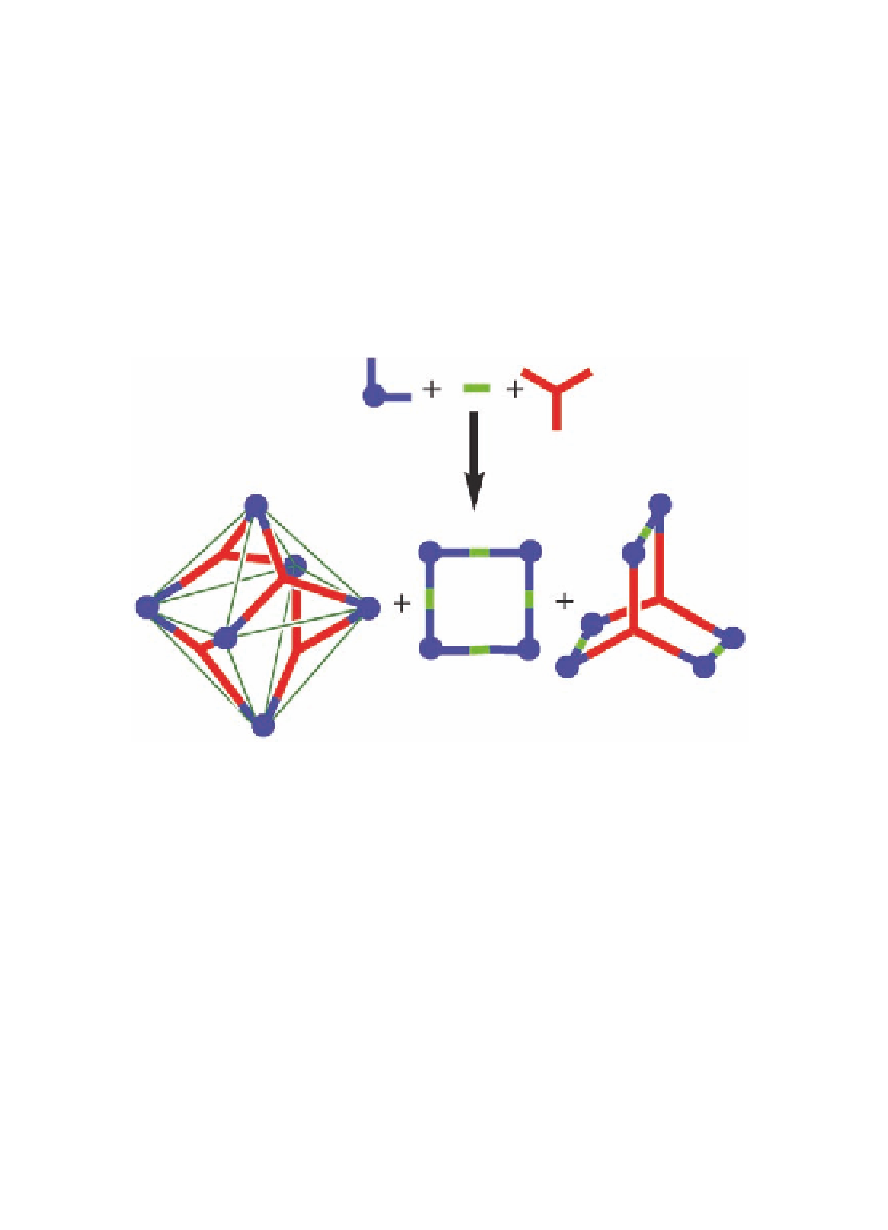Biology Reference
In-Depth Information
9.3.1
Self-Assembly of Trigonal Prisms
A general concept that one can imagine for the design of a trigonal
prism is to use two tritopic donors, six 90
corners, and three linear
linkers by a [2 + 6 + 3] self-assembly reaction (Scheme 9.7). However,
the main drawback of a three-component self-assembly is the lack of
selectivity in the formation of the products and generally a mixture
of products is produced. Although a few examples of the formation of
such assemblies by the judicious insertion of appropriate template
is known, such syntheses are not selective in the absence of template
and thus are discouraged.
°
°
Scheme 9.7
Possible supramolecular structures from 90
acceptor, linear
ditopic donor, and tritopic linkers.
As the multicomponent self-assembly approach is unpredictable,
we have used two-component self-assembly approach to design
trigonal prism. Syntheses of nanoscopic prisms
were
achieved by reacting the tridentate planar organometallic acceptor
14
17
and
18
with the clip-type amide containing ligand 1,3-bis(3-pyridyl)
isophthalic amide
15
and ditopic donor 1,3-bis(3-pyridylethynyl)
benzene
16
, respectively. The carbon-centered Pt
acceptor
19
3
was assembled with the rigid organic clip
20
to obtain the cage
21
(Scheme 9.8).

Search WWH ::

Custom Search